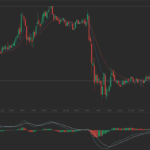 Both WTI and Brent futures added early in Europe today. Yesterday both contracts backed off from monthly highs, amid speculation of growing crude supplies in top-consumer US. Oil has been supported by an improving economic outlook for the US and tensions in Ukraine, which alongside a sharp drop in US inventories last week bumped up prices to some “preposterous” levels.
Both WTI and Brent futures added early in Europe today. Yesterday both contracts backed off from monthly highs, amid speculation of growing crude supplies in top-consumer US. Oil has been supported by an improving economic outlook for the US and tensions in Ukraine, which alongside a sharp drop in US inventories last week bumped up prices to some “preposterous” levels.
West Texas Intermediate futures for settlement in July traded for $104.26 per barrel at 7:14 GMT on the New York Mercantile Exchange, up 0.14%. Prices ranged from $104.05 to $104.29 per barrel. Yesterday the US benchmark lost 0.23%, after the two-day electronic trading session, though it did near a three-month peak. Last week the contract gained 2.71%, after the Energy Information Administration in the US revealed supplies of crude had decreased by almost 8 million barrels.
Meanwhile on the ICE in London, Brent futures due in July recorded a 0.33% gain to trade for $110.33 per barrel at 7:04 GMT. Daily high and low stood at $110.40 and $110.15 per barrel, respectively. Brent’s premium to WTI stood at $6.07, widening last session’s closing margin of $5.91. Yesterday the European brand dropped 0.27%, after last week the contract logged a 0.71% increase.
US supplies outlook
Usually, the US Energy Information Administration releases its weekly report on oil stockpiles on Wednesday, but due to the holiday on Monday, this week the report is due tomorrow. Also one day later, meaning today, will be released the weekly American Petroleum Institute (API) report. According to a Bloomberg survey, crude inventories probably rose by 250 000 barrels, while a Reuters poll suggests an 700 000 barrel gain.
“Investors have one eye on what’s happening in Ukraine,” said for Bloomberg Jonathan Barratt, chief investment officer at Ayers Alliance Securities in Sydney. “If inventories decline again, the market will focus on it, regardless of ample supply.”
Last week supplies saw the biggest draw since January. The report for the week ended May 16revealed that crude oil stockpiled in the US had dropped by almost 8 million barrels. The decline was due, primarily, to a sharp decrease in imports, which fell by almost 0.7 million barrels per day (bpd). Oil at Cushing was also drawn to stand at 23.2 million barrels. Previously, commercial reserves of crude oil in the US were pushing record-high readings for the past two months, and they still remain in the vicinity of historic highs.
Ukraine
Ukraine saw an escalation of fighting on Monday, as militants attacked the airport in Donetsk, and authorities soon retaliated, employing airstrikes and heavy weaponry. Dozens of separatist fighters had reportedly been killed. The mayor of Donetsk reported there have been civilian casualties and urged the populace to stay indoors.
Ukraine’s interim Interior Minister Arsen Avakov said “The airport is under our full control. The enemy suffered heavy losses. We have none,” the BBC reported.
The attack came a day after the presidential election took place, with a clear winner in the first round. Former foreign minister and billionaire Petro Poroshenko received about 54% of the vote. Turnout was probably very poor, about 50%, with the separatist provinces of Luhansk and Donetsk boycotting the vote, and forcefully closing all voting stations. The airport attack was probably in address to the new president’s plans to visit the Donbass soon.
Mr Poroshenko said he will not allow the Donbass to be “turned into Somalia,” and dismissed any talks with the armed rebels. He vowed to press on with the “anti-terrorist” operation, and said that it “should and will be over in a matter of hours.” He added that for any peaceful resolution to be lasting, there must be cooperation with Russia, and said he is ready to work with the Kremlin. Meanwhile, Russian Foreign Minister Sergei Lavrov also said Moscow was ready to work with the new Ukrainian president, but insisted military actions must cease.
Economic outlook
Later today the EU will post important readings on the economy. Consumer confidence for May is projected to be slightly improving, but still negative at -7.0, up from April’s -8.6. Industrial sentiment, however, is forecast to be worsening at -4.0, from -3.6 for the previous month.
The sluggish recovery in the EU, as seen through a number of mediocre or outright bad figures recently, prompted ECB President Mario Draghi to suggest easing might be due.
“If policy measures are announced to help boost growth in the euro zone, that should have a positive impact on Brent prices and also spill over to support WTI,” said for Reuters Ben Le Brun said, market analyst with OptionsXpress.
Elsewhere, the US, which consume more than 21% of all oil in the world, will report on GDP growth, jobless claims and pending homes sales tomorrow. GDP growth for the first quarter of 2014 will probably be downgraded from the 0.1% initial figure to -0.5% on a quarterly basis. The brutal winter withered economic activities, and a relatively negative reading was expected.
Initial applications for unemployment benefits are projected to stand at 318 000 for the week ended May 24, down from 326 000 for the previous reading, while continuing claims for the seven days through may 17 will probably be unchanged at 2.650 million.
Agreed home sales, which only await payment, for the month of April are forecast to have grown by 1.0% on a monthly basis, after adding 3.4% in March.
On Friday, a report on personal income and spending for April in the world’s top economy will be released. Economists project a minor monthly increase in both.
Yesterday the US posted several more indicators. The Conference Board (CB) reported its consumer confidence index standing for May. The figure was put at 83.0, in line with expectations, to mark the highest reading since January 2008. The index is a leading indicator for consumer spending, which generates about 70% of US GDP. The CB revised its reading for April down to 81.7.
Also yesterday, Markit posted its preliminary US services PMI for May. The reading was logged at 58.4, beating expectations for a figure of 55.6 by quite a significant margin and growing on April’s 55.0, testifying to the growing confidence in the US economy. The services sector accounts for almost 80% of US GDP.
Earlier, durable goods orders for April were revealed. Total orders added 0.8% on a monthly basis, beating expectations of a 0.5% fall, while core orders, which exclude transportation items, logged a 0.1% growth, short of expected 0.3% gain. Last month total orders registered an upward-revised 3.6% monthly growth, while core goods had added 2.9%.
“There are quite a few bullish factors in the oil market that are supportive, we have good economic indicators and uncertainty over Ukraine,” said for Reuters Tetsu Emori, commodity fund manager at Astmax Investment. “But the U.S. equity market is too strong. My worry is if we see some profit-taking in equities, oil may fall as well.”
All major US stocks indices recorded sizable gains yesterday, with S&P 500 reaching an all-time high, while Nasdaq and Dow remain with 1% of record values.
Technical view
According to Binary Tribune’s daily analysis, in case the West Texas Intermediate July future on the NYMEX breaches the first resistance level at $104.55, it probably will continue up to test $104.99. Should the second key resistance be broken, the US benchmark will most likely attempt to advance to $105.48.
If the contract manages to breach the first key support at $103.62, it will probably continue to drop and test $103.13. With this second key support broken, the movement to the downside will probably continue to $102.69.
Meanwhile, July Brent on the ICE will see its first resistance level at $110.64. If breached, it will probably rise and probe $111.27. In case the second key resistance is broken, the European crude benchmark will probably attempt to advance to $111.73.
If Brent manages to penetrate the first key support at $109.55, it will likely continue down to test $109.09. With the second support broken, downside movement may extend to $108.46 per barrel.





